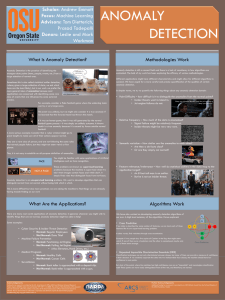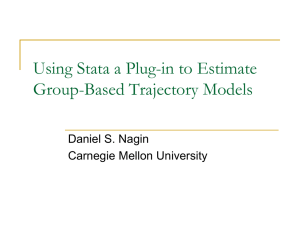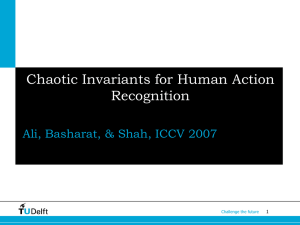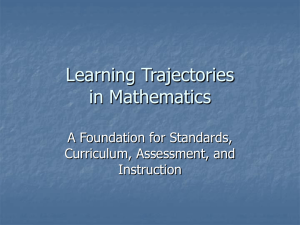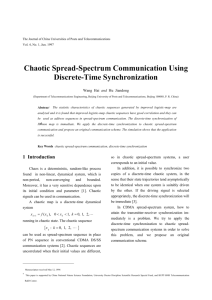ppt - University of Central Florida
advertisement
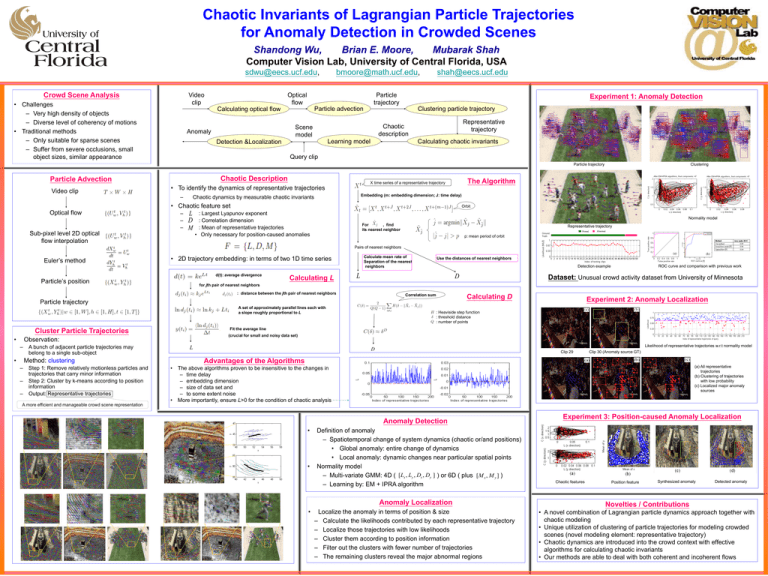
Chaotic Invariants of Lagrangian Particle Trajectories for Anomaly Detection in Crowded Scenes Shandong Wu, Brian E. Moore, Mubarak Shah Computer Vision Lab, University of Central Florida, USA sdwu@eecs.ucf.edu, Crowd Scene Analysis Video clip • Challenges – Very high density of objects – Diverse level of coherency of motions • Traditional methods – Only suitable for sparse scenes – Suffer from severe occlusions, small object sizes, similar appearance bmoore@math.ucf.edu, Optical flow Particle trajectory Experiment 1: Anomaly Detection Particle advection Calculating optical flow Clustering particle trajectory Representative trajectory Chaotic description Scene model Anomaly shah@eecs.ucf.edu Learning model Detection &Localization Calculating chaotic invariants Query clip Particle trajectory Chaotic Description Particle Advection Video clip – The Algorithm X time series of a representative trajectory • To identify the dynamics of representative trajectories Embedding (m: embedding dimension; J: time delay) Chaotic dynamics by measurable chaotic invariants • Chaotic feature set Optical flow – – – Sub-pixel level 2D optical flow interpolation L D M Clustering Orbit : Largest Lyapunov exponent : Correlation dimension : Mean of representative trajectories • Only necessary for position-caused anomalies Normality model For , find its nearest neighbor Representative trajectory p: mean period of orbit Pairs of nearest neighbors Euler’s method • 2D trajectory embedding: in terms of two 1D time series d(t): average divergence Particle’s position Calculating L Calculate mean rate of Separation of the nearest neighbors Use the distances of nearest neighbors L D Correlation sum Calculating D Particle trajectory A set of approximately parallel lines each with a slope roughly proportional to L A bunch of adjacent particle trajectories may belong to a single sub-object L – – Step 1: Remove relatively motionless particles and trajectories that carry minor information Step 2: Cluster by k-means according to position information Output: Representative trajectories Likelihood of representative trajectories w.r.t normality model D Clip 29 Clip 30 (Anomaly source GT) Advantages of the Algorithms Method: clustering – : Heaviside step function : threshold distance : number of points (crucial for small and noisy data set) Observation: • Experiment 2: Anomaly Localization Fit the average line Cluster Particle Trajectories – Dataset: Unusual crowd activity dataset from University of Minnesota for jth pair of nearest neighbors : distance between the jth pair of nearest neighbors • ROC curve and comparison with previous work Detection example • • (a) All representative trajectories (b) Clustering of trajectories with low probability (c) Localized major anomaly sources The above algorithms proven to be insensitive to the changes in – time delay – embedding dimension – size of data set and – to some extent noise More importantly, ensure L>0 for the condition of chaotic analysis A more efficient and manageable crowd scene representation ** Anomaly Detection • • • Definition of anomaly – Spatiotemporal change of system dynamics (chaotic or/and positions) • Global anomaly: entire change of dynamics • Local anomaly: dynamic changes near particular spatial points Normality model – Multi-variate GMM: 4D ( [Lx , Ly , Dx , Dy ] ) or 6D ( plus [M x , M y ] ) – Learning by: EM + IPRA algorithm Experiment 3: Position-caused Anomaly Localization Chaotic features Position feature Synthesized anomaly Detected anomaly Anomaly Localization Novelties / Contributions Localize the anomaly in terms of position & size – Calculate the likelihoods contributed by each representative trajectory – Localize those trajectories with low likelihoods – Cluster them according to position information – Filter out the clusters with fewer number of trajectories – The remaining clusters reveal the major abnormal regions • A novel combination of Lagrangian particle dynamics approach together with chaotic modeling • Unique utilization of clustering of particle trajectories for modeling crowded scenes (novel modeling element: representative trajectory) • Chaotic dynamics are introduced into the crowd context with effective algorithms for calculating chaotic invariants • Our methods are able to deal with both coherent and incoherent flows

